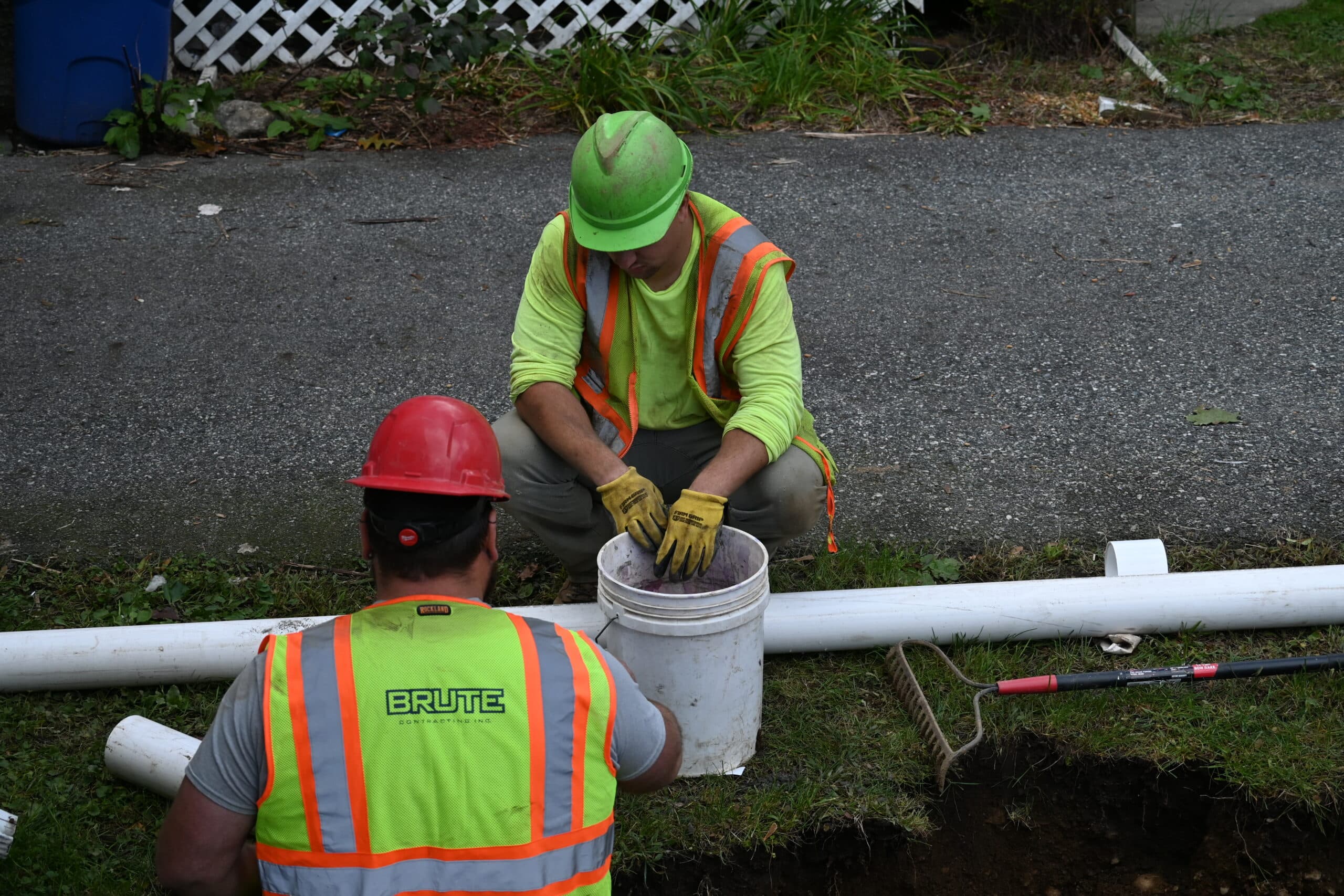Fixing a main sewer line clog can be a challenging and messy task. It's often best to consult a professional sewer company for major sewer line issues, as they have the necessary tools and expertise to address the problem safely and effectively. However, if you want to attempt some initial troubleshooting on your own, here are the steps to follow:
Troubleshooting Sewer Line Clog
1. Identify the Problem:
Determine if you have a main sewer line clog. Common signs include slow drainage in multiple fixtures (toilets, sinks, showers, etc.), gurgling noises in drains, and sewage backups in lower-level fixtures.
2. Safety Precautions:
Put on protective gear, including gloves and safety goggles, to prevent contact with sewage or wastewater.
3. Turn Off Water Supply:
Locate your home's main water supply valve and shut it off. This will prevent additional water from flowing into your plumbing system.
4. Gather Tools and Materials:
You'll need a few tools and materials, including a sewer auger or snake, a pipe wrench, a bucket, a garden hose, a flashlight, and possibly a sewer clean-out wrench (if available).
5. Locate the Clean-Out Access:
Find the sewer clean-out access point. It's typically a white PVC or black ABS pipe with a removable cap located near the house foundation or in the yard. This access point allows you to access the main sewer line directly.
6. Remove the Clean-Out Cap:
Use a pipe wrench or clean-out wrench to carefully remove the clean-out cap. Be prepared for water or sewage to come out when you do this, so have a bucket ready.
7. Insert the Auger or Snake:
Carefully feed the sewer auger or snake into the clean-out opening. Slowly advance the cable while turning the handle clockwise. The auger should move through the pipe, breaking up the clog. If you encounter resistance, try to work through it, but avoid forcing the cable to prevent damage.
8. Work the Auger:
Continue feeding the auger or snake into the pipe until you no longer encounter resistance. Then, slowly retract it while still turning the handle clockwise. This action should help clear the clog.
9. Flush with Water:
After using the auger, flush the sewer line with a garden hose to help clear any remaining debris. Insert the hose into the clean-out access and turn on the water. Allow it to run for several minutes.
10. Replace the Clean-Out Cap:
Once you're satisfied that the clog is cleared, replace the clean-out cap and tighten it securely.
11. Turn On Water Supply:
Turn the main water supply back on and check all your plumbing fixtures to ensure they're draining properly. Monitor for any signs of further issues.
if the clog persists or if you encounter significant resistance while using the auger, it's essential to call a professional plumber. Some sewer line clogs may require specialized equipment or repairs beyond what you can do on your own. Additionally, attempting to fix a sewer line yourself may cause damage to the sewer line if not done correctly, leading to more extensive and costly repairs. If you would like a free sewer service assessment in New Jersey, contact us at (201) 581-3740 or fill out our contact form.
⚠️ Are you experiencing sewer issues in New Jersey and need a sewer line repair and replacement specialist to provide you with a service or second opinion?
Contact BRUTE Contracting and you will be greeted by our owners, Daniel Radici or Uri Bussi. Daniel or Uri will listen to your sewer issues and provide you with the best option regarding your current situation and a free estimate for your sewer line replacement service.
If you qualify, you will be provided with a free sewer camera inspection so our team can assess the condition of the sewer line and provide you with an in-depth proposal regarding the scope of work and costs required to repair or replace the sewer line.


